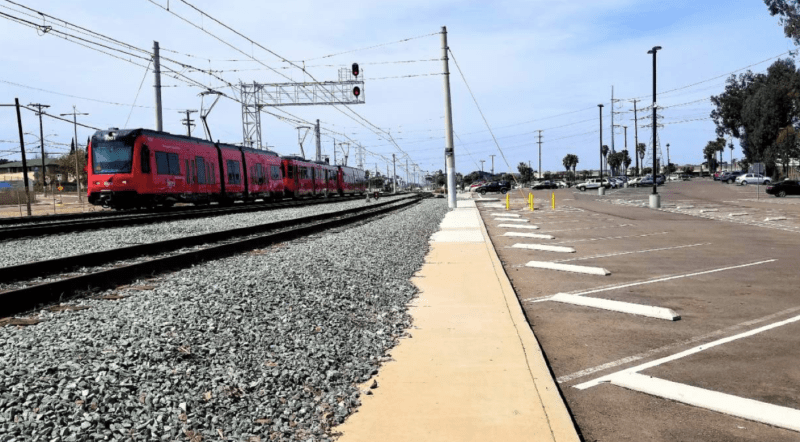San Diego's light rail stations are not what you'd call hubs of activity.
At most of its trolley stops, the Metropolitan Transit System maintains hundreds of parking spaces. And some of these park-and-ride fields are only 30 percent full on at peak hours, according to a new report from the nonprofit Circulate San Diego. It's time for MTS to get busy redeveloping these sites as spaces where people can live, the group says.
MTS controls some 57 acres of prime developable land, according the report. Under current zoning rules, this real estate could support the construction of more than 8,000 homes. Circulate San Diego recommends that 3,000 of them be reserved for people making no more than 60 percent of the area median income.
Many transit agencies -- notably Atlanta -- have facilitated new development near key stations.
San Diego's MTS is perfectly capable of inviting development proposals at its stations. However, the agency has not issued requests for proposals in more than 10 years, Circulate San Diego found.
"The result is a substantial amount of publicly owned land that is adjacent to a transit stop and not used by anyone for any purpose" writes author Colin Parent.
At the Amaya Drive Station, for example, just under half the 236 parking spots are used during weekdays, according to a survey by volunteers.
The specter of NIMBY opposition is one reason MTS might be hesitant to pursue development opportunities that would make the transit system more useful to more people. By leaving these parking lots untouched, Parent writes, "MTS can avoid difficult conversations with adjoining landowners, neighborhood groups, and other stakeholders."
But that neglects the MTS Board's obligation "to ensure the agency uses it real estate assets to benefit both the agency directly and other important public policy goals," Parent writes. Circulate San Diego recommends that MTS inventory its land holdings and issue a series of RFPs to redevelop strategic sites.






